观星指南(2022年11月)
11月的天空会发生什么?月食,月球和行星,以及狮子座流星雨。
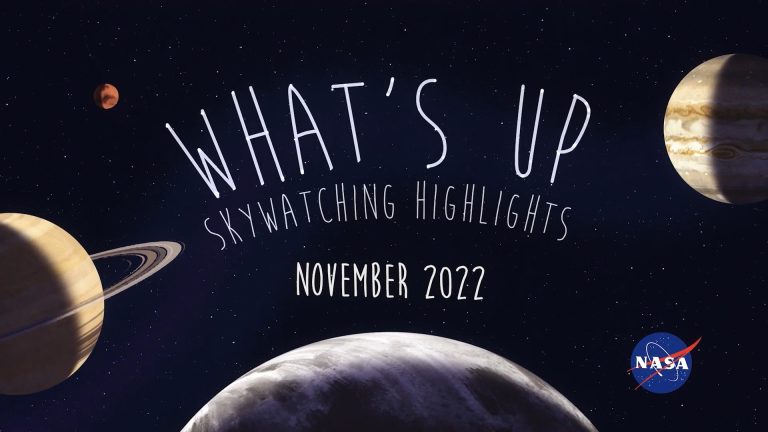
11月的天空会发生什么?月食,月球和行星,以及狮子座流星雨。

十月份的天空会发生什么?夜晚有巨行星,火星改变方向,来自猎户座的流星。
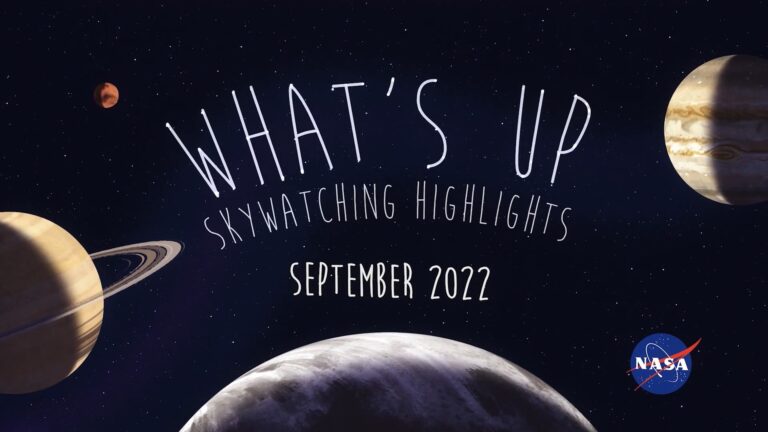
九月份的天空会发生什么?火星在移动,木星的最佳观测时间,以及一个在秋分点寻找方位的巧妙方法。

2022年8月13日 Herschel Crater on Mimas Image Credit Cassini Imaging Team, ISS, JPL, ESA, NASA Explanation: Mimas, small 400 kilometer-diameter moon of Saturn, is host to 130 kilometer-diameter Herschel crater, one of the larger impact craters in the entire Solar System. The robotic Cassini spacecraft orbiting Saturn in 2010 recorded this startling view of small moon and big crater while making a 10,000-kilometer record close pass by the diminutive icy world. Shown in contrast-enhanced false color, the image data reveal more clearly that Herschel’s landscape is colored slightly differently from heavily cratered terrain nearby. The color difference could yield surface composition clues to the violent history of Mimas. Of course, an impact on Mimas any larger than the one that created the 130-kilometer Herschel might have…
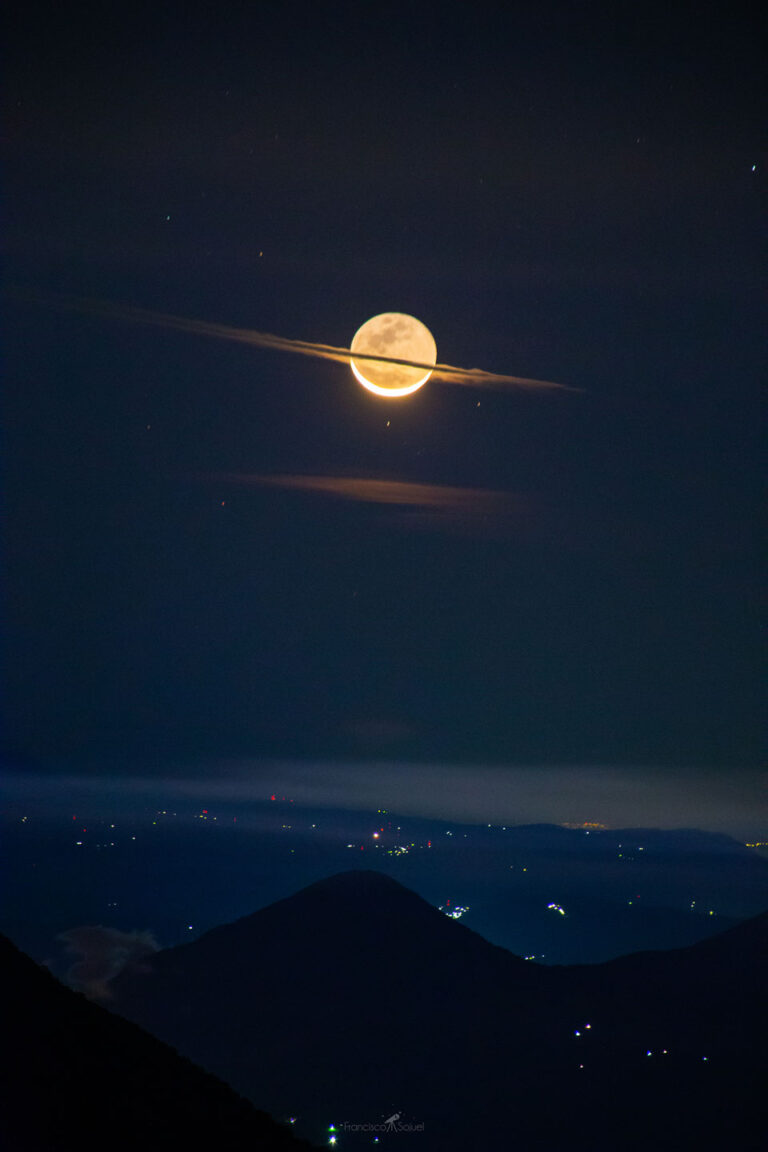
2022年8月2日 A Moon Dressed Like Saturn Image Credit & Copyright: Francisco Sojuel Explanation: Why does Saturn appear so big? It doesn’t — what is pictured are foreground clouds on Earth crossing in front of the Moon. The Moon shows a slight crescent phase with most of its surface visible by reflected Earthlight known as ashen glow. The Sun directly illuminates the brightly lit lunar crescent from the bottom, which means that the Sun must be below the horizon and so the image was taken before sunrise. This double take-inducing picture was captured on 2019 December 24, two days before the Moon slid in front of the Sun to create a solar eclipse. In the foreground, lights from small Guatemalan towns are visible behind the huge…
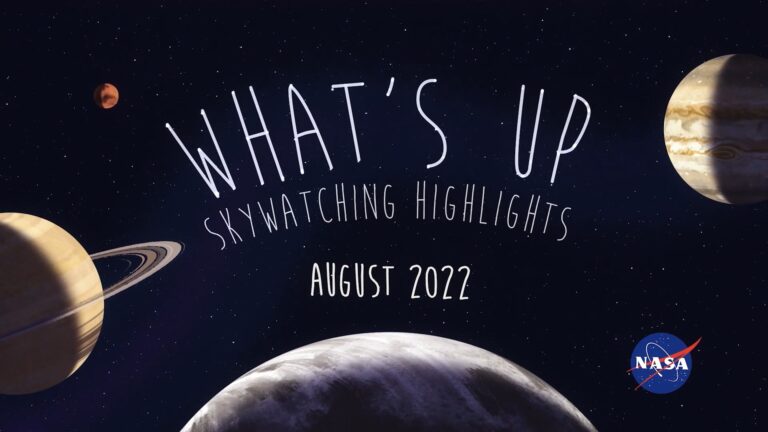
八月份的天空会发生什么?拿起你的双筒望远镜来观测行星,展望英仙座,以及和天鹅座一起翱翔。

2022年7月24日 Saturn in Infrared from Cassini Image Credit: NASA, JPL-Caltech, SSI; Processing: Maksim Kakitsev Explanation: Many details of Saturn appear clearly in infrared light. Bands of clouds show great structure, including long stretching storms. Also quite striking in infrared is the unusual hexagonal cloud pattern surrounding Saturn’s North Pole. Each side of the dark hexagon spans roughly the width of our Earth. The hexagon’s existence was not predicted, and its origin and likely stability remains a topic of research. Saturn’s famous rings circle the planet and cast shadows below the equator. The featured image was taken by the robotic Cassini spacecraft in 2014 in several infrared colors. In 2017 September, the Cassini mission was brought to a dramatic conclusion when the spacecraft was directed to…
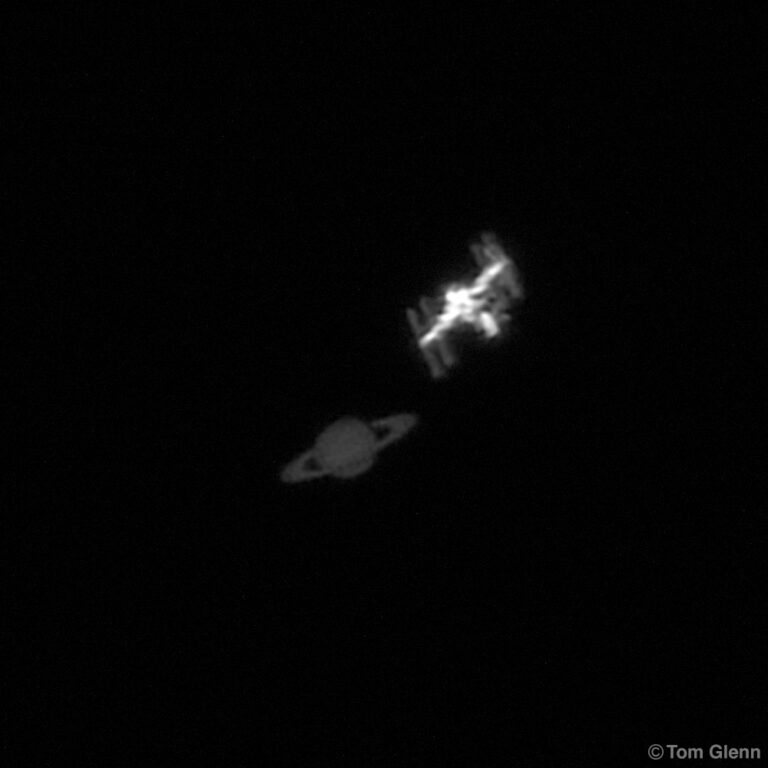
2022年7月9日 Saturn and the ISS Image Credit & Copyright: Tom Glenn Explanation: Soaring high in skies around planet Earth, bright planet Saturn was a star of June’s morning planet parade. But very briefly on June 24 it posed with a bright object in low Earth orbit, the International Space Station. On that date from a school parking lot in Temecula, California the ringed-planet and International Space Station were both caught in this single high-speed video frame. Though Saturn was shining at +0.5 stellar magnitude the space station was an even brighter -3 on the magnitude scale. That difference in brightness is faithfully represented in the video capture frame. In the challenging image, the orbiting ISS was at a range of 602 kilometers. Saturn was about…
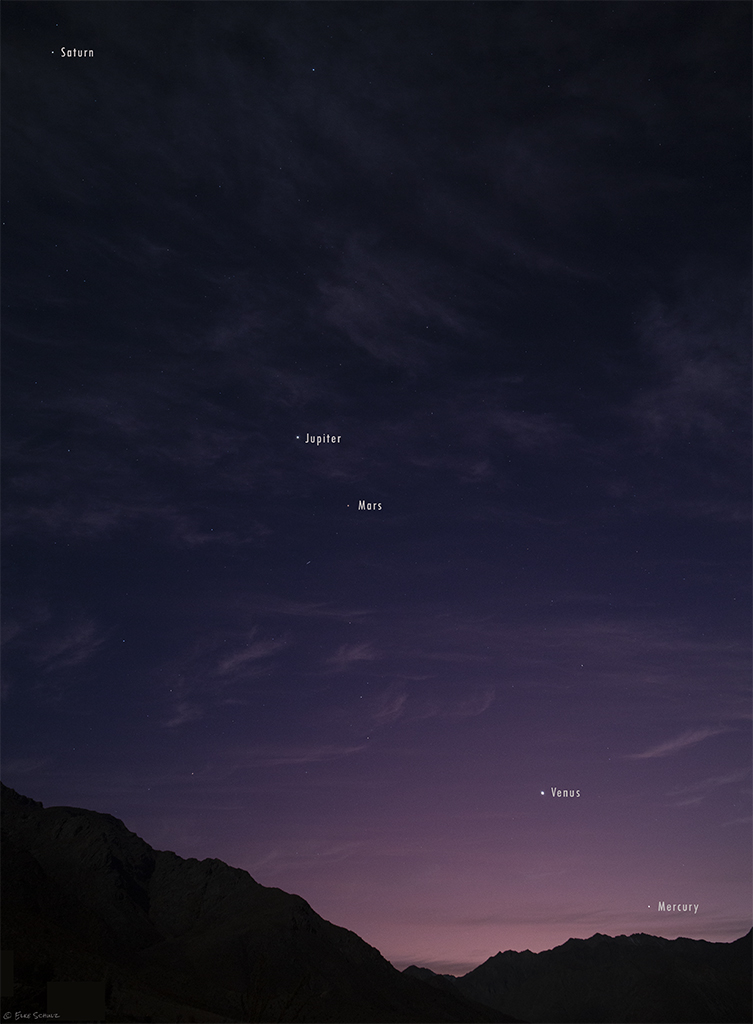
2022年6月17日 Good Morning Planets from Chile Image Credit & Copyright: Elke Schulz (Daniel Verschatse Observatory) Explanation: On June 15, innermost planet Mercury had wandered about as far from the Sun as it ever gets in planet Earth’s sky. Near the eastern horizon just before sunrise it stands over distant Andes mountain peaks in this predawn snapshot from the valley of Rio Hurtado in Chile. June’s other morning planets are arrayed above it, as all the naked-eye planets of the Solar System stretch in a line along the ecliptic in the single wide-field view. Tilted toward the north, the Solar System’s ecliptic plane arcs steeply through southern hemisphere skies. Northern hemisphere early morning risers will see the lineup of planets along the ecliptic at a shallower…
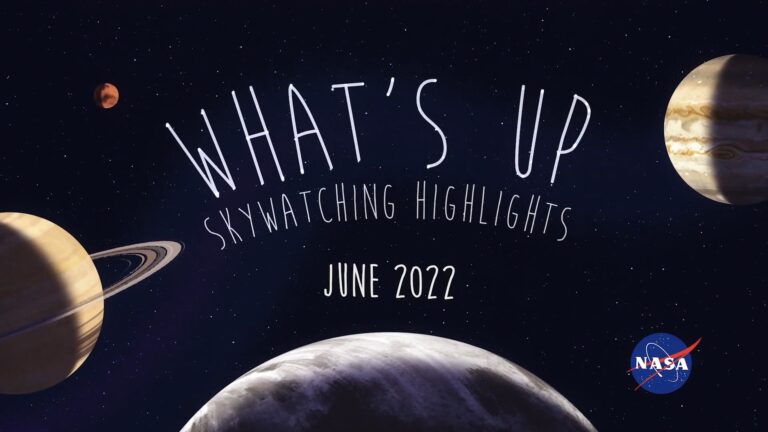
6月份的天空会发生什么?行星解体,知名星团和天琴座的最佳观测。